Prepping for a Deep Freeze…
It’s about to get really cold…

Well, cold in this area of the desert southwest. Temperatures are predicted to dip into the 20s for a few days, which is quite cold for zone 9a.
As a result, I am being asked by quite a few people about what they should do to prepare their semi-tropical plants for the cold temperatures.
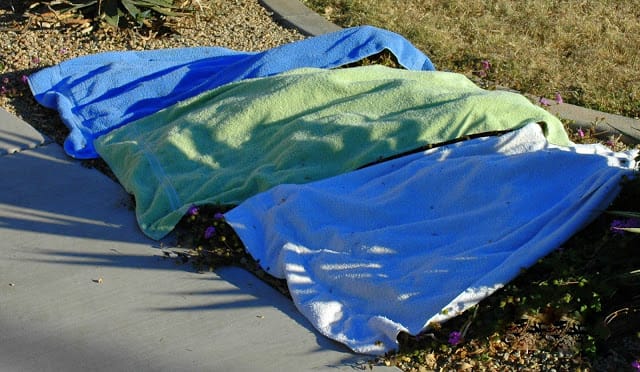
The best thing you can do is to cover your frost-tender plants. This helps to trap the heat that rises from the ground, which raises the temperature by a few degrees around your plants.
Earlier this week, I wrote about how to protect your plants during a normal winter freeze (30 degrees and above). You do have the choice to protect your plants or not. I mentioned that I only protect my high-profile Lantana near my front entry.
But, when temperatures are forecast to fall into the 20s for a few days, I start pulling out all my old linens, including my kid’s old character bed sheets…
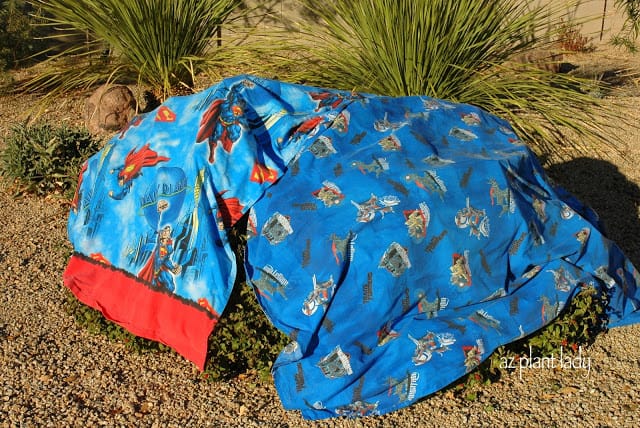
I cover most of my semi-tropical plants, including my other lantana, young citrus tree, yellow bells, bougainvillea and pink trumpet vine.
The reason for this is that I don’t want my plants killed to the ground by the frost, which can happen when temperatures dip into the 20s for a few days.
You see, frost damage can be cumulative with each additional night of freezing temps, creating more damage to plants.
So, if you have frost cloth – use it. If you don’t, then start raiding your linen closet and pull out towels, sheets, tablecloths, etc. Believe it or not, even newspapers can provide some protection. Just anchor it down with rocks to keep it from blowing away. (I once used canned foods from my pantry to anchor frost blankets 😉
What you shouldn’t use is plastic.
Also, if you want to protect your plants – you have to do better than this person did…
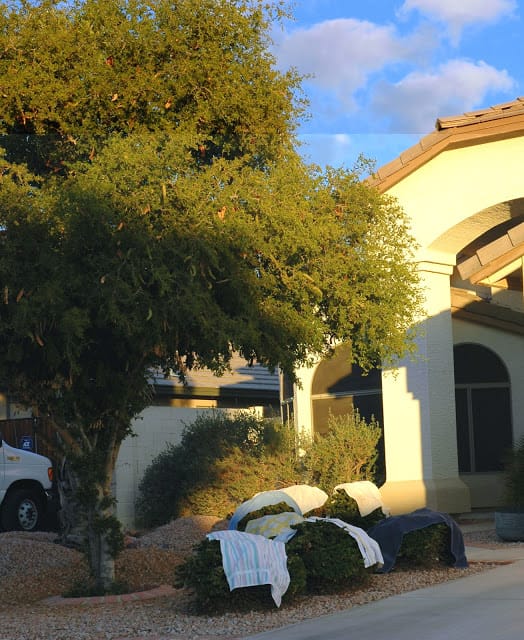
What they ended up with was plants with green areas, surrounded by brown, crispy frost-damaged growth. You need to cover the entire plant with no gaps.
Watering your plants at dusk also helps because water releases heat into the night.
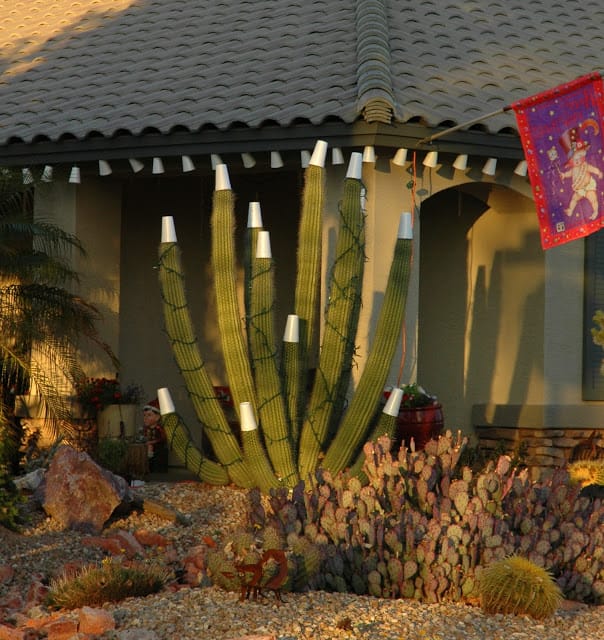
If you have columnar cacti, then protect the ends using styrofoam cups.
Young citrus trees should also be protected.
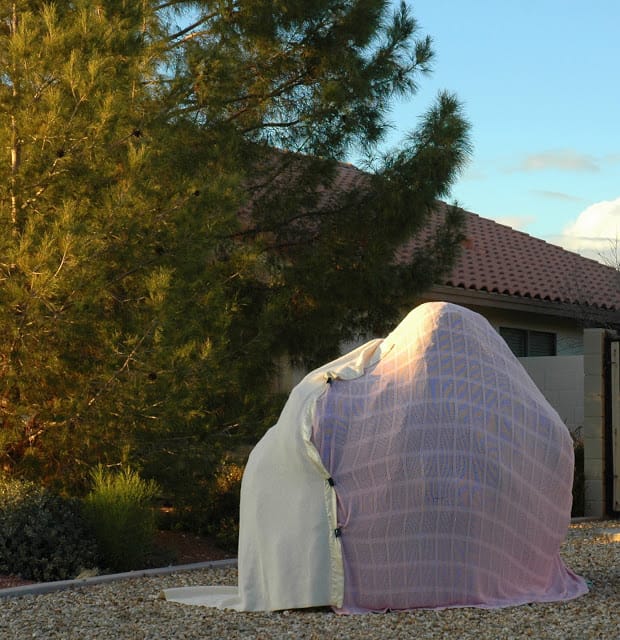
If freezing temperatures persist, you can keep the coverings such as towels, sheets, and blankets on your plants for at least a week. If freezing temperatures last longer, uncover plants for a few hours during the middle of the day when temps are over 45 degrees to allow them to get needed sunlight. *If you use frost cloth, it is permeable and doesn’t need to be removed.
So what do you do if you don’t protect your plants and they look like this afterward?
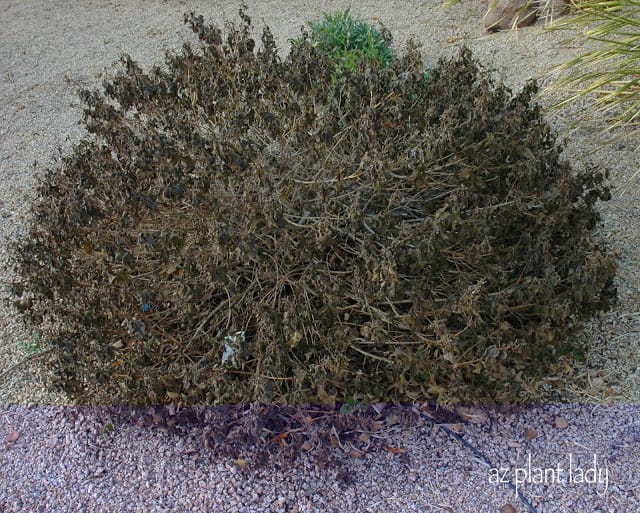
Relax, first of all. More than likely, it is still alive at the base and will grow back once spring arrives.
Whatever you do, DON’T prune them now! That can damage or even kill your plant. I know it is ugly, but it is only until spring when you can prune all the frost-damaged foliage away.
**Even if you protect your plants from frost, there can still be some frost damage that occurs. It all depends on the severity and duration of the cold. But covering them increases the chance that they will recover once temperatures warm up in spring.
Cold Weather in the Desert ? Are You Kidding ?

 Noelle Johnson, aka, 'AZ Plant Lady' is a author, horticulturist, and landscape consultant who helps people learn how to create, grow, and maintain beautiful desert gardens that thrive in a hot, dry climate. She does this through her consulting services, her online class Desert Gardening 101, and her monthly membership club, Through the Garden Gate. As she likes to tell desert-dwellers, "Gardening in the desert isn't hard, but it is different."
Noelle Johnson, aka, 'AZ Plant Lady' is a author, horticulturist, and landscape consultant who helps people learn how to create, grow, and maintain beautiful desert gardens that thrive in a hot, dry climate. She does this through her consulting services, her online class Desert Gardening 101, and her monthly membership club, Through the Garden Gate. As she likes to tell desert-dwellers, "Gardening in the desert isn't hard, but it is different."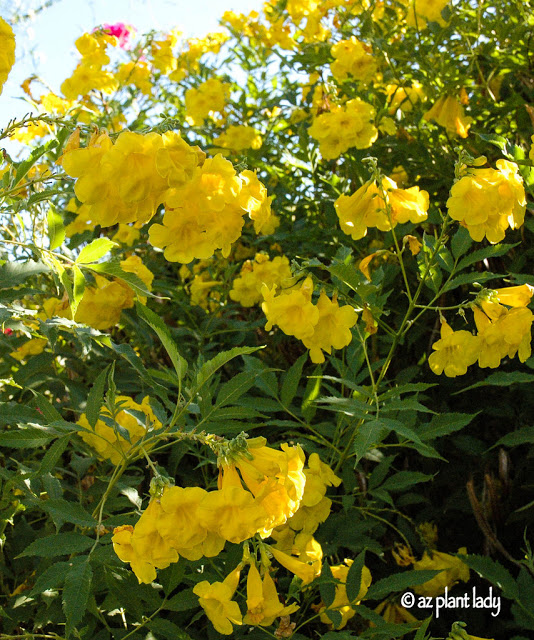

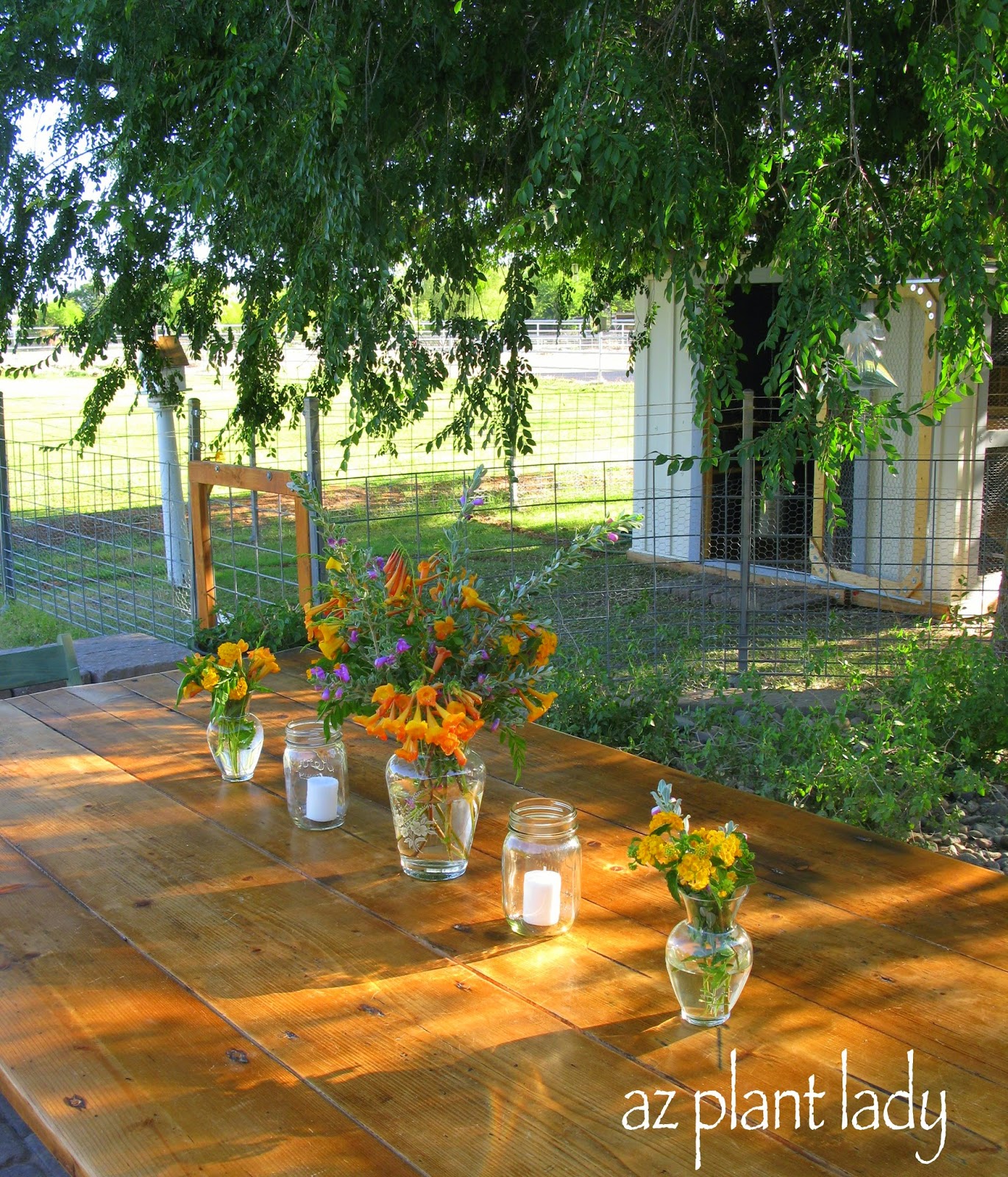
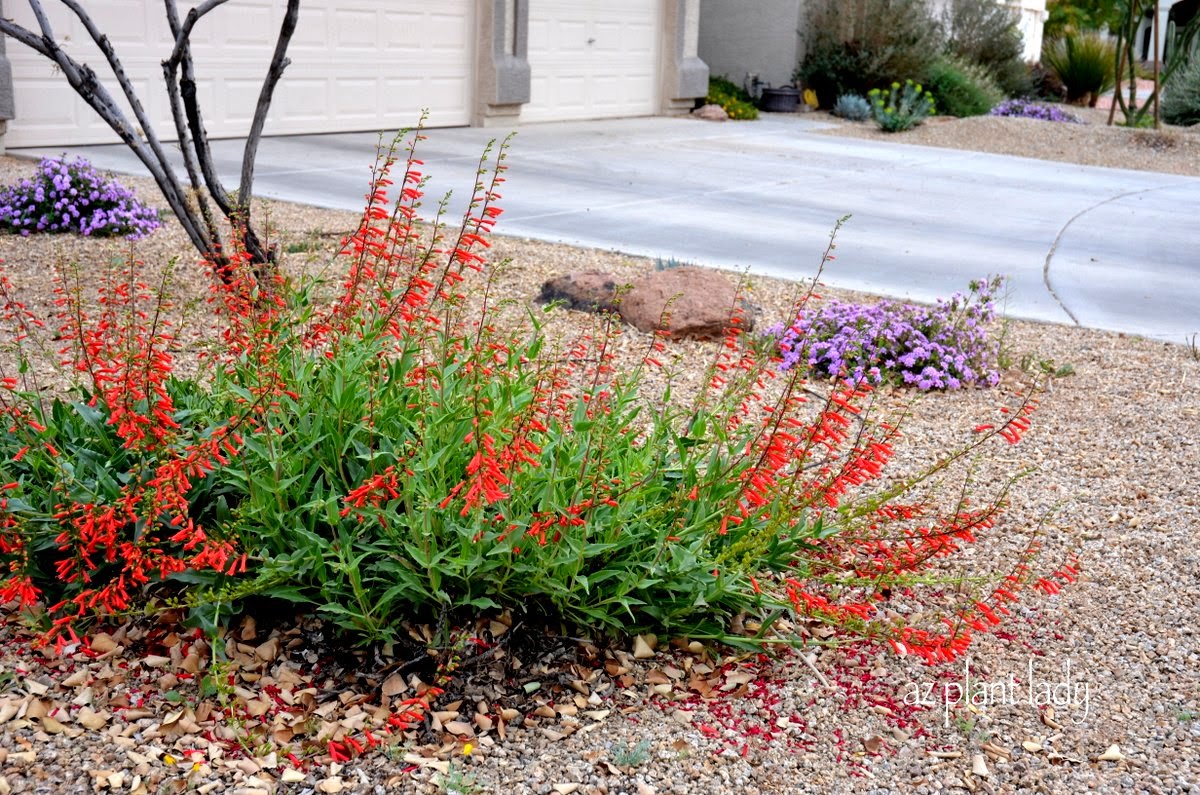
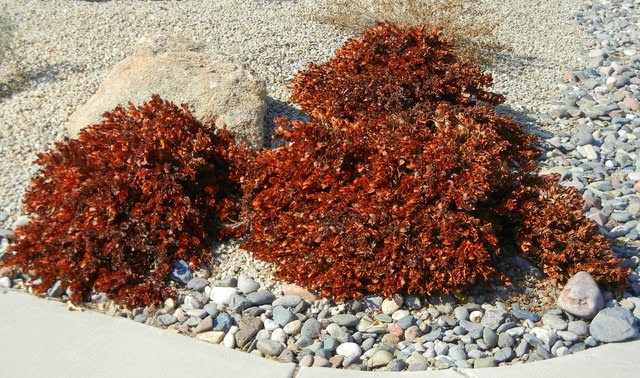
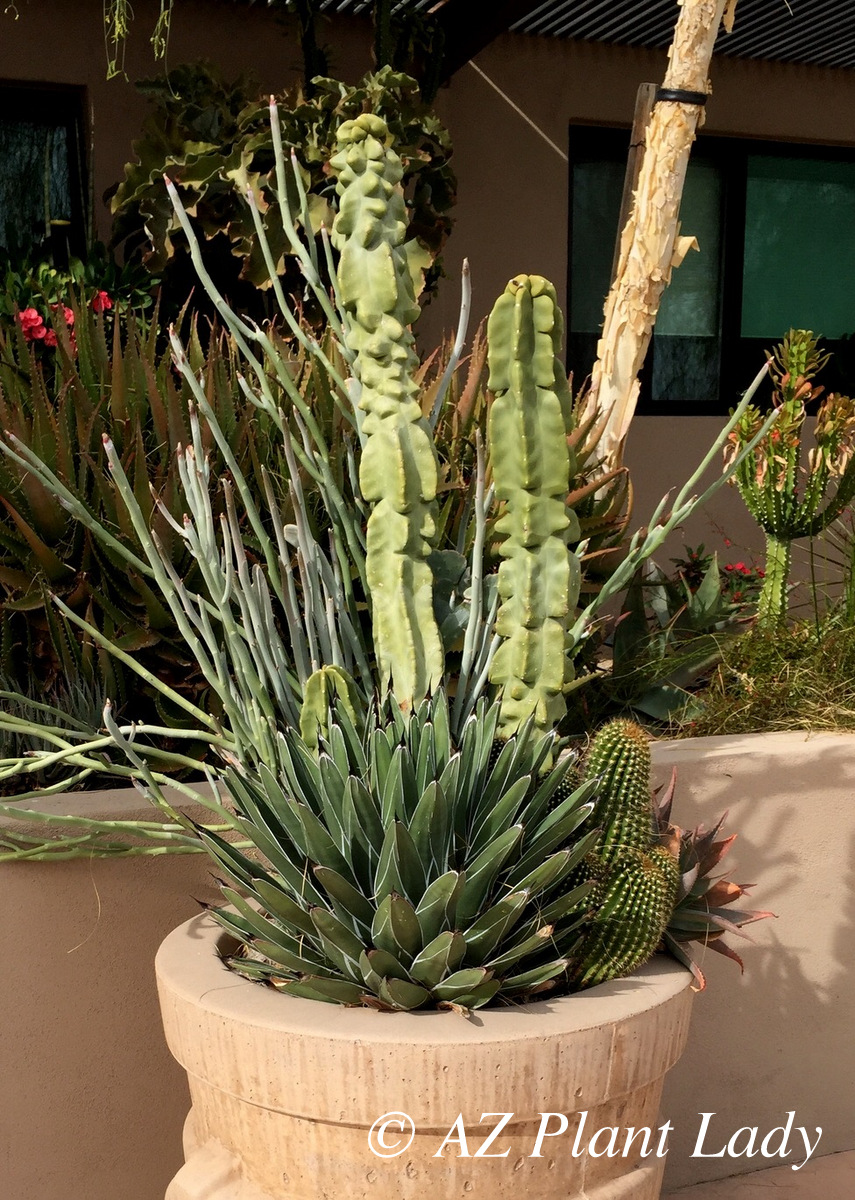








Its a little bit funny to compare your cold conditions back home. Here all plants are covered and protected by 1 meter snow. But soon we will enjoy spring and alpin skiing. Hope your plants are OK!
Great lesson! Compared to the high desert, what you do now is what I did in late Nov. 14F low today, <10 lows / <32 highs next 5 days, so glad I have no marginal plants.
Question – your zone 9a implies many winters average out to a low of 20-25F; your forecast lows sound like your average winter cold. But is this severe "quite cold" for you since it's cumulative, with more than 1 night of 20's? Or you no longer get as cold as your zone once said? I'm just curious what that means in Phx!
Hi David,
Thank you so much for your comment. You are right in stating that the reason this cold snap will be cummulative….over 5 nights in the 20's. It has been interesting noting the progressive frost damage over the past few days. The first day – not too much. But now we are on day 3 and plants are looking pretty crispy and dark brown/black.
There are many winters where all we experience is a single night in the 20's, not 5 in a row 🙂
Noelle
Some great tips! I didn't know that you should water at dusk. I have also pulled out all sorts of odd blankets and whatnots in the past – my neighbors probably thought I was nuts 🙂
Good luck. I have many friends worried about there yards in Southern Arizona hope yours does well it looks like you have done as much as you can. Hope it warms up soon for you…
I know my lantana will come back in the spring because it always does. I'm particulary concerned about my large hibiscus (potted) which I baby constantly through the summer, misting and watering all the time. I covered it every night during the recent frost and it only has a few branches where the leaves are brown and crispy. I was going to cut them off this weekend but after reading what you wrote, I will wait. The whole plant looks a little wilty but I'm hoping it will perk up with the warmer temps now.
I'm so glad you wrote about this in detail!!!
Thanks for sharing this. I'm not thrilled about what the frost does, but I guess I'll just have to be patient. I'm definitely not ready for spring to get here, because after that, comes summer!!!
If you need extra protection, lay a string or strings of outdoor mini Christmas lights (not LED lights, the ones that get hot) on the ground around the plants, then cover them. It’s often just enough heat to keep them happy.
Great tip. Thank you for sharing!